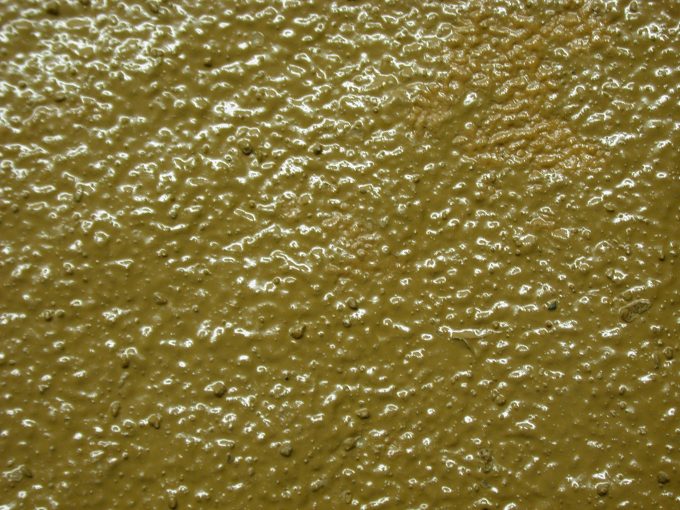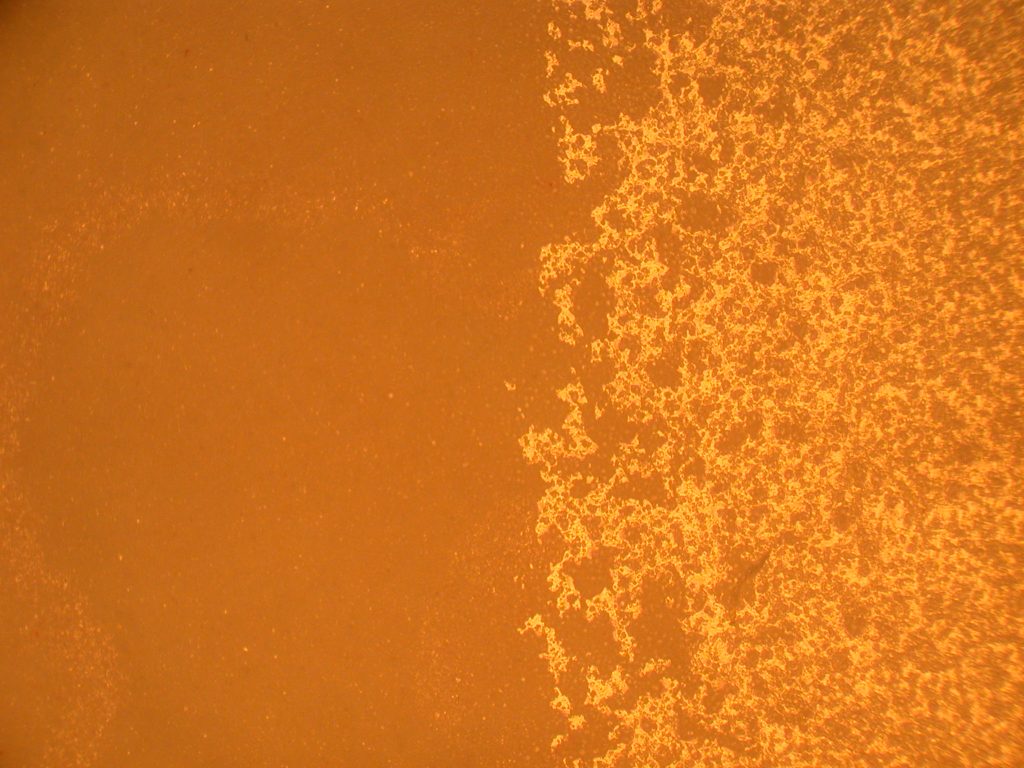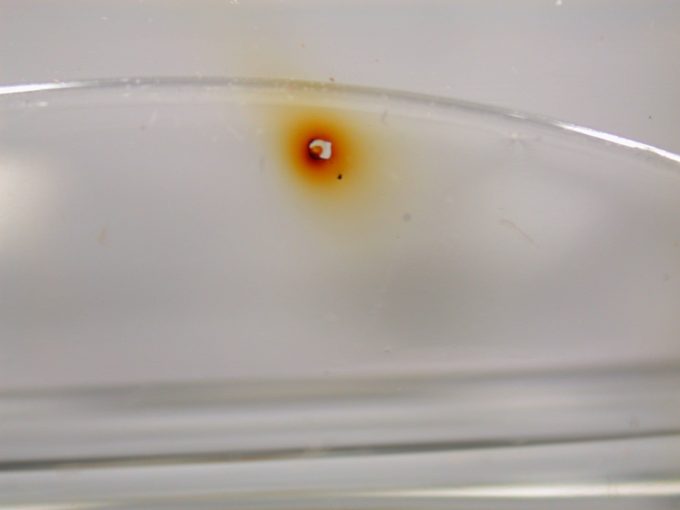Analysis Capabilities for Plastics/Polymers:
- Weight of each component of a copolymer
- Confirmation of a particular plastic based on the decomposition or oxidation temperature
- Weight of volatile components or adsorbed liquids such as water, organic solvents, fuel, or oils
- Weight of fill materials such as carbon black, calcium carbonate, aluminum trihydrate, silica, talc, zinc oxide, titanium dioxide, bentonite, kaolin clay, strontium oxide, mica, glass microspheres, antimicrobial copper or silver particles or thin films, and metal oxide powders used as fire retardants, UV blockers, colorants, thermal insulation, electrical conductivity promoters, and x-ray absorbers
- Weight of reinforcing materials such as carbon fiber, fiberglass, or silicon carbide
- Prepares fill material for identification by XPS below by decomposing or burning off the polymer matrix
Thermomechanical Analysis or TMA or Dilatometry:
- Thermal expansion properties, coefficient of thermal expansion (CTE)
- Softening temperature and glass transition temperature, Tg
- Relative degree of polymer crystallinity
- Shrinkage due to adsorbed liquids such as water, fuel, or oils being volatilized
- Shrinkage upon cure
- Swelling characteristics due to adsorption of a liquid
- Identification of the number of organic layers or materials in a coating such as wax coatings on transfer paper
- Static creep
Differential Scanning Calorimetry or DSC:
- Glass transition temperature
- Degree of cure or cross-linking, optimization of cure time, check on ratio mixture of 2-part adhesives
- Endothermal or exothermal phase changes or reactions, including melting temperature and measurement of the heat of fusion
- Polymorphism
- Measure the heat and temperature of crystallization
- Heat of vaporization of water or other volatiles
- Detection of impurities or secondary components by distinct melting temperatures or by thermally stimulated reaction with the primary ingredient
- Measure the latent heat of melting of a component polymer in a material with multiple polymers in it to determine the percentage of the melting polymer, such as of nylon 6 in a fabric with Spandex
- Oxidation temperature and energies
- Detect isomorphic organic components by reactions at or above the melting temperature
- Specific heat measurement
- Producing a phase diagram for a physical system
FTIR or Infrared Spectroscopy:
- Identification of bonding groups
- Identify polymer or plastic
- Use specular reflectance angle-dependent results to distinguish surface from near-surface species, as for multiple polymer layers
- Identify surface organic contaminants
- Identify pharmaceutical materials, including pill coatings and timed-release agents
- Identify organic contaminants
- Adhesive bond failure investigation

GC-MS or Gas Chromatography – Mass Spectroscopy:
- Detecting and measuring organic polymer additives
- Identifying and measuring organic materials leached from polymers
- Detecting and identifying volatile organic components in polymers
- Detecting and measuring Bisphenol A (BPA) in plastics / polymers
- Identifying and measuring chemicals in liquids and gases
- Detecting and identifying corrosive phenolic compounds in foam roof insulation materials
X-ray Photoelectron Spectroscopy or XPS or ESCA:
- Quantitative elemental and functional group chemical analysis of polymer surfaces
- Measurement of surface contamination including silicones
- Quantitative elemental & functional group analysis of surface treatments to affect such properties as coefficient of friction, dissipation of static charge, printability, changes due to sterilization or cleaning processes, adhesive bonding, friction bonding, reactivity, and degradation
- Identification of solid residue components due to fill materials after TGA burn-off of plastic, including borosilicate fiberglasses, silica, alumina, titanium dioxide, SiC, and minerals.
- Surface chemistry of fill materials prior to addition to polymer, which may affect resin wetting, agglomeration of particles, and migration to surfaces or interfaces
- Detection of components that segregate to the plastic surface, such as plasticizers, organic fire retardants, and fill particles with poor surface wetting properties
- Identify layer or interface of delamination or peeling and whether a contaminant is present there
- Investigate adhesive bonding failures due to surface segregation of plasticizer, inorganic fill particles such as talc, or migration of sodium from silica particle surfaces; or due to mold release agent or other contaminant; or due to stress in coating caused by internal layer contamination; or due to adhesive or primer degradation
- Polymer sealing problems
- Polyethylene fiber surface analysis with coating and after stripping the coating This is also an example of a report.
- Measure the carbon and nitrogen concentrations
- Measure the concentrations of elements F, Na, Mg, Al, Si, P, S, and heavier to U
- Detect very low concentrations of heavy metals down to 10 ppm
- Measure the phosphorus and bromine concentrations of flame-retardants
- Measure the composition and concentrations of inorganic filler materials
- Determine the composition of fiberglass in fiberglass-reinforced composites
- Provide ROHS analysis for restricted heavy metals
- Measure bromine concentration to see if further analysis may be needed for ROHS restricted polybrominated biphenyls or diphenyl ethers
- Determine the percentages of semi-crystalline phase and amorphous phase
- Determine the crystalline phases of fill particles added to the resin
- Combine with XPS analysis to determine if certain fill particles have preferentially migrated to the surface due to composite material, paint, or sealing material degradation
Laser-Induced Breakdown Spectroscopy:
- Integrated with the Keyence 7000N Digital Optical Microscope with 3D imaging
- Performs quick qualitative elemental analysis of fill particles to depth of 5 – 7 micrometers
- Provides quick qualitative elemental analysis of inclusions of foreign material near surfaces
- Measure reflectivity as a function of UV and visible light wavelength
- Measure color properties
- Measure light transmission properties
- Can be a rapid check for fraudulent products

Profilometry or Surface Roughness and Microscopy:
- Measure surface roughness
- 3-dimensional surface topography mapping
- Detection of defects as small as 500 nm
- Measurement of 2D and 3D distances
- Layer thickness measurements
- Tensile testing
- Compression testing
- Hardness testing, Shore A and Shore D Durometers
- Bend testing
- Adhesive peel testing
- Adhesive lapshear testing
SEM and Microscopic Failure Analysis:
- Identify type of failure
- Examine surface roughness, microcracking, porosity, and pin-holes
- Identify location of crack initiation in failure
- Determine morphology of reinforcing materials
- Identify the layer or interface at which delamination or peeling occurs
- Document interfacial segregation of fill particles and any agglomeration, which is evidence of a high particle/resin interfacial energy

Analysis of Multilayered Plastic Films:
- Analysis of outer layers with FTIR and XPS
- Solvent rub may allow interior layers to be exposed and analyzed with FTIR and XPS
- Use fine abrasive to expose interior layers for analysis
- Analyze entire film or thinned film with DSC, TGA, XRF, or LIBS to gain further identifying information on the interior polymer layers

Gloss Measurement:
- 20, 60, and 85 degree angle gloss measurements
- Measurement to ISO 2813, GB/T 9754, ASTM D523, and ASTM D2457 Standards
Thermal Conductivity and Effusivity:
- Measure thermal conductivity
- Use variations in thermal conductivity to reveal uniformity and quality problems such as the uneven distribution of fill particles or fibers
- Measure the effusivity of fabrics
ASTM Test Methods:
- ASTM D523 – Standard Test Method for Specular Gloss
- ASTM D570 – Standard Test Method for Water Absorption of Plastics
- ASTM D572 – Standard Test Method for Rubber-Deterioration by Heat and Oxygen
- ASTM D2457 – Standard Test Method for Specular Gloss of Plastic Films and Solid Plastics
- ASTM D2584 – Standard Test Method for Ignition Loss of Cured Reinforced Plastics
- ASTM D7984 – Standard Test Method for Measurement of Thermal Effusivity of Fabrics Using a Modified Transient Plane Source (MTPS) Instrument
- ASTM E96 – Standard Test Methods for Water Vapor Transmission of Materials
- ASTM E228 – Standard Test Method for Linear Thermal Expansion of Solid Materials with a Vitreous Silica Dilatometer
- ASTM E928 – Standard Test Method for Determination of Purity by DSC
- ASTM E1269 – Standard Test Method for Determining Specific Heat Capacity by DSC
- ASTM E1356 – Standard Test Method for Glass Transition Temperatures by DSC
- ASTM E2160 – Standard Test Method for Heat of Thermally Reactive Materials by Differential Scanning Calorimetry
- ASTM E793 – Standard Test Method for Enthalpies of Fusion and Crystallization by Differential Scanning Calorimetry
- ASTM E831 – Standard Test Method for Linear Thermal Expansion of Solid Materials by Thermomechanical Analysis
- ASTM E1131 – Standard Test Method for Compositional Analysis by Thermogravimetry
- ASTM E1545 – Standard Test Method for Assignment of the Glass Transition Temperature by Thermomechanical Analysis
- ASTM E2008 – Standard Test Method for Volatility Rate by Thermogravimetry
- ASTM D638: Standard Test Method for Tensile Properties of Plastics
- ASTM D695: Standard Test Method for Compressive Properties of Rigid Plastics
- ASTM D1710: Standard Specification for Extruded Polytetrafluoroethylene (PTFE) Rod, Heavy Walled Tubing and Basic Shapes
- ASTM D2240: Standard Test Method for Rubber Property — Durometer Hardness
- ASTM F1055, Annex 2: Standard Specification for Electrofusion Type Polyethylene Fittings for Outside Diameter Controlled Polyethylene and Crosslinked Polyethylene (PEX) Pipe and Tubing
See other ASTM Standard Test Methods for Plastics and Rubbers on our Test Methods page under the Plastics and Rubbers Categories.
Adhesive Failure Analysis – Adhesion Testing
Case Histories:
FTIR Analysis of Products Formed from Overheating a Silicone Material
Polymer Analysis of Fiberglass Reinforced Nylon-6 Pellets for Injection Molding
Solving a Polymer Sealing Problem with XPS Analysis
Silicone Detection on the Surface of an Acrylic Adhesive/Polyimide Tape
For polymer characterizations, please email Dr. Vaidheeshwar Ramasubramanian at vaidheeshwar.r@andersonmaterials.com or Dr. Charles Anderson at canderson@andersonmaterials.com


